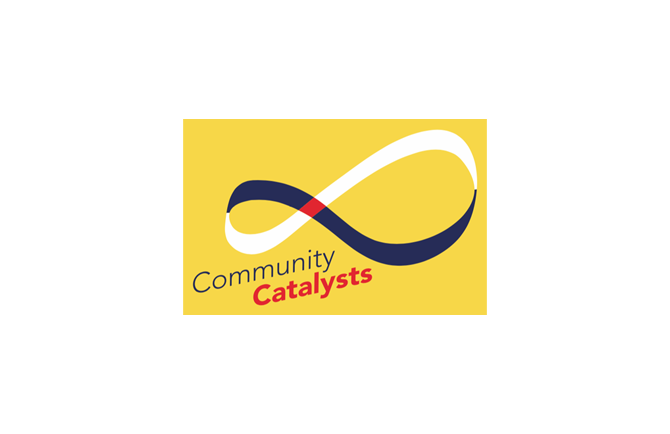COMMUNITY CATALYSTS TOOLKIT

Welcome to the Community Catalysing Toolkit. This Toolkit is an invitation for collaboration with Land and Place as a mode to embrace Deep Presence, Integral Belonging and Meaningful Change. We aspire to embark in such a venture by activating collective and iterative design processes that mimic natural patterns, aiming to bring us closer to our innate and grounded interconnectedness, as earthlings, with the places we inhabit.
We’ve centred its collaborative design flow on the WeLand - Making Sense of Place Ecological Design Thinking process. WeLand - Making Sense of Place is a patterned language journey which allows communities to collaboratively design their livelihoods through a nature-based approach, using the natural flow of life, which modern livelihoods tend to be totally disconnected from. It reminds people how places are shaped by their active presence and how the deepening of relationships with the ecological landscape and among community members, either citizens, public and private institutions or policy makers, affects the direction of the overall development of a community.
The Community Catalysing Toolkit aims to embody a process that can accelerate systemic change, openly supporting the emergence of place-based regenerative livelihoods that can lead to thriving and just communities embedded in healthy ecosystems.
 .
. 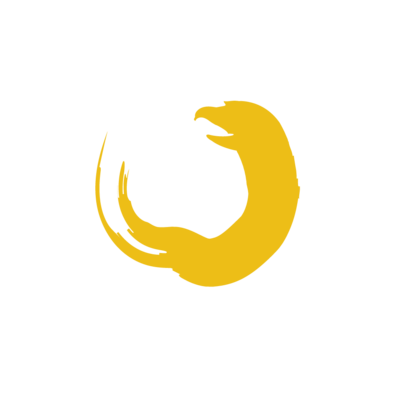
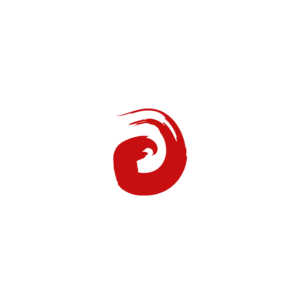 .
.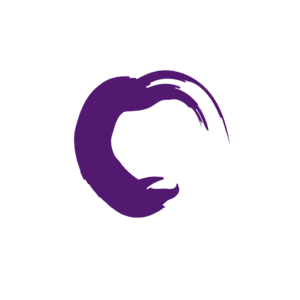

WeLand - Making Sense of Place
WeLand is a five phase cycle, flowing through making sense of place into regenerative livelihoods. It moves from a holistic connection with the landscape in a wide sensorial diagnosis, aiming for deep engagement between the community, the land and each other. This creates a confluence of understanding which names the identity of a place. Emerging from the naming phase, key actors re-engage the community in co-designing their future. Ideas crystallize and are tested. New information is gathered and collated as interaction with landscape deepens, thus refining identity through a continuous iterative process. WeLand can happen simultaneously at a variety of scales and through multiple interacting projects.
WeLand Phases:
The design process happens in a vortex movement along 5 phases of inquiry:
LANDSCAPE INTEGRITY To understand landscape as it is perceived
CO-SENSING Understand the presence of who is part of the landscape
IDENTITY NAMING Identify what is willing to emerge from the relationship between what we are and what we may become
CO-DESIGN Co-create strategies for landscape and community regeneration
REGENERATIVE LIVELIHOODS Implement desired actions
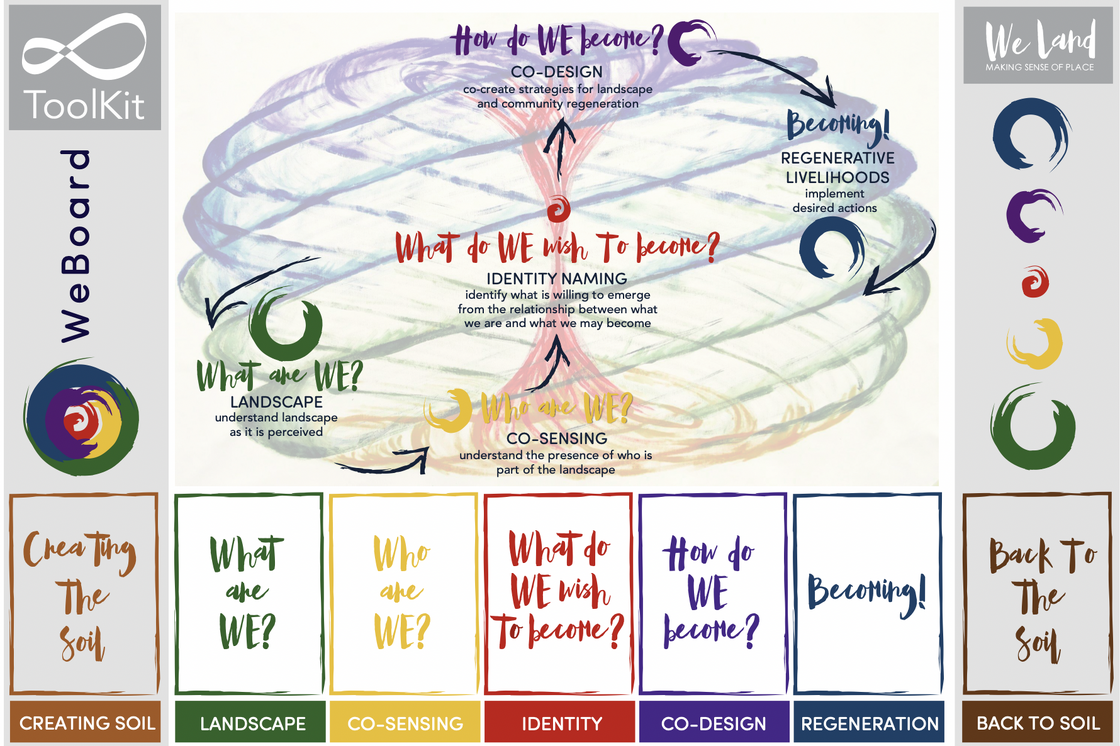
Two other phases support the process and happen in the beginning of the process, before entering the vortex and in the end of the design process, when coming out of the vortex:
CREATING THE SOIL Choose tools to build a common ground for collaboration
BACK TO THE SOIL Evaluate and integrate the learnings of the cycle
Activation Tips:
There are no fixed tools, only flexible suggestions.
- Structure emerges from understanding, not imposition.
- A balance of approaches and voices yields clarity.
- Authentic engagement generates momentum.
- Ego blocks the flow. Love makes it grow.
- Every end is a beginning. Celebration marks completion with joy.
Learn more about this cycle and Community Catalysts universe in the introductory program available in the Learning page.
TOOLKIT COMPONENTS
WeBoard

Canvas to:
- Visualise the WeLand Phases within a cycle
- Keep track of the design flow
- Place the selected WePractice Cards
Suggested printing size: A1
WeMeta Cards
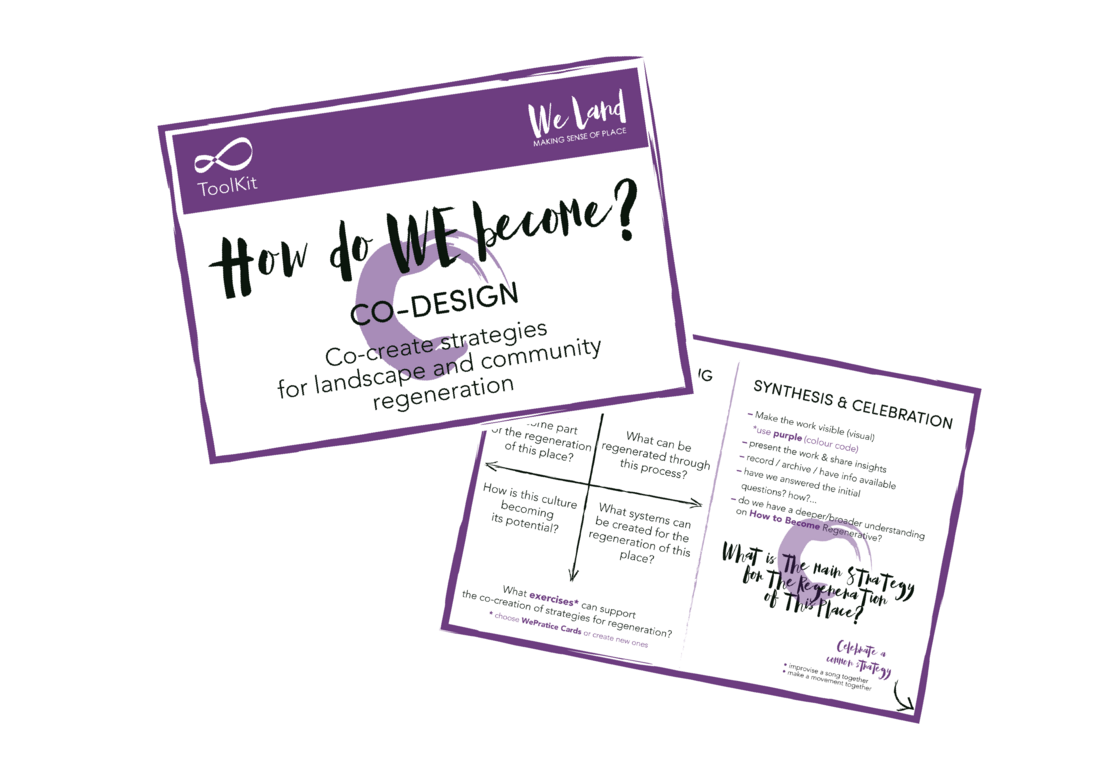
A WeMeta Card for each phase that:
- Introduce a phase
- Harvest collective findings
- Synthesise and celebrate
Suggested printing size: A3
WePractice Cards
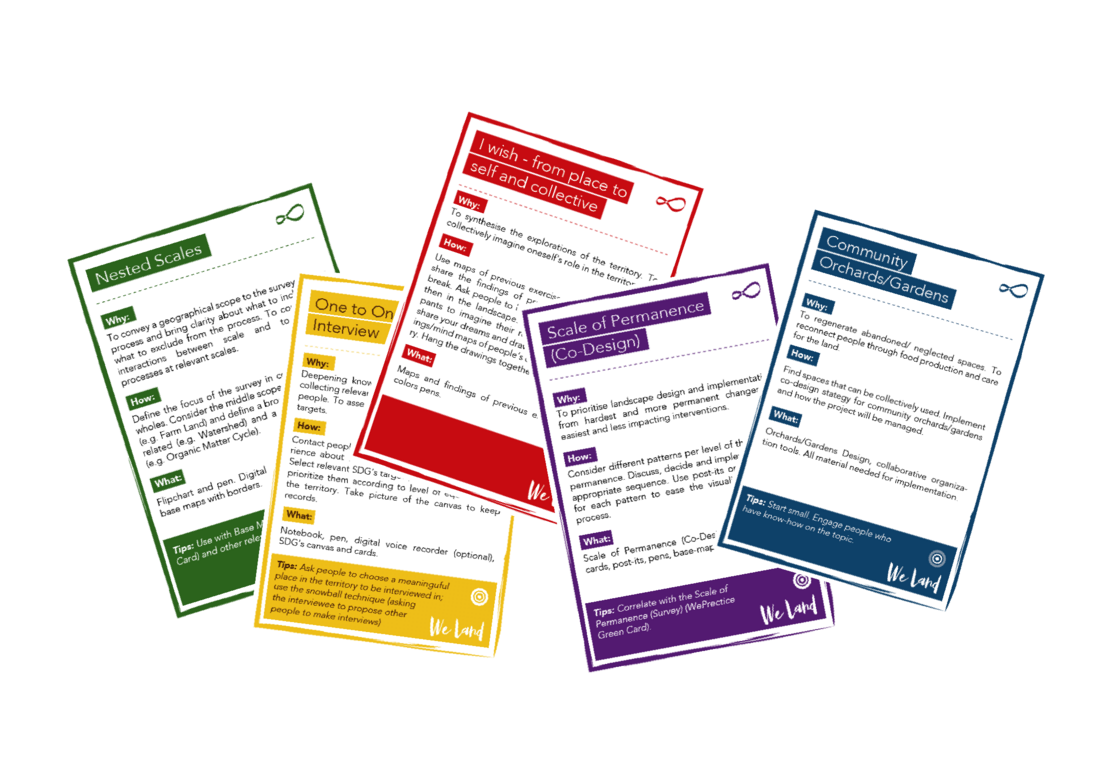
A wide collection of sense-making practices to:
- Choose from and adapt to context
- Facilitate selection process
- Guide each activity
- Expand the toolkit with new practices
Navigate with the help of tags
The toolkit contains numerous tools for every phase of the “WeLand - Making Sense of Place” cycle. As mentioned before, some of them can be used in several contexts, formats, some of them can be used in a specific setting or context. The goal is to provide the best collection of tools for every user to their specific needs, circumstances, timespan, local reality, etc. For this reason the toolkit has a tag system which can be used to focus on those tools that are useful and appropriate for your work. To generate your own unique selection with the set of tools you intend to use in a specific phase, you can filter the tools based on different aspects of the activity, choosing which characteristics you want to include in your filtering to reach the final set of cards that make sense for you, your work, your community.
Make your own TOOLBOX
You are invited to explore the toolkit cards throughout the phases of the WeLand - Making Sense of Place. The toolkit contains an ever growing collection of practice cards that can be used in several settings and contexts for several purposes. You can download the whole toolkit or you can choose to download only those cards that are relevant to you and your community. We recommend selecting those practices that make more sense to you and create your own toolbox. You can even create distinct toolboxes according to different processes. When you download your selection, you will be able to print the cards, cut them and use them with your target group.
Online x Printed Toolkit
This toolkit works both on-line and/or as a printed hardcopy, combining strengths of both formats. On the online version, practice cards contain additional information, links, attachments and opportunities. The printable version, is aimed to serve presential group dynamics where printed materials facilitate the engagement, agility and embodiment of the Design process. It can reach anyone, independently of internet-connection or even electricity. It can be tailored to your needs through the platform, and has the essential information about the practice and a QRcode to connect with the digital version for further info.
